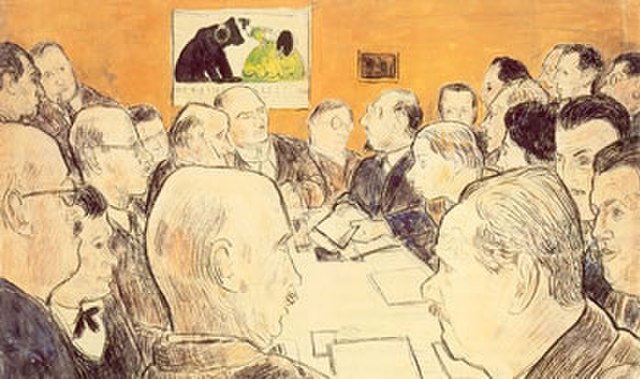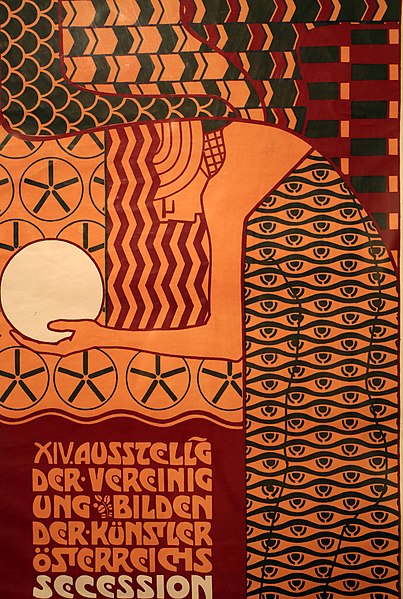The Berlin Secession was an art movement established in Germany on May 2, 1898. Formed in reaction to the Association of Berlin Artists, and the restrictions on contemporary art imposed by Kaiser Wilhelm II, 65 artists "seceded," demonstrating against the standards of academic or government-endorsed art. The movement is classified as a form of German Modernism, and came on the heels of several other secessions in Germany, including Jugendstil and the Munich Secession.
Meeting of the Berlin Secession. From the left: Wilhelm Kohlhoff, Erich Büttner, Friedrich Scholz, Ernst Fritsch, Leo von König, Lovis Corinth, Ernst Oppler, Emil Orlik, Bruno Krauskopf, Charlotte Behrend-Corinth, Erich Waske, Franz Heckendorf by Ernst Oppler, 1921
Jury for the Berlin Secession 1908 exhibition. From the left: sculptors Fritz Klimsch and August Gaul, painters Walter Leistikow and Hans Baluschek, art dealer Paul Cassirer, painters Max Slevogt (sitting) and George Mosson (standing), sculptor Max Kruse, painters Max Liebermann (sitting), Emil Rudolf Weiß and Lovis Corinth.
Painting by Edvard Munch, "The Dance of Life", 1899–1900.
Building of the Berlin Secession in Tiergartenstraße 21a
In art history, secession refers to a historic break between a group of avant-garde artists and conservative European standard-bearers of academic and official art in the late 19th and early 20th century. The name was first suggested by Georg Hirth (1841–1916), the editor and publisher of the influential German art magazine Jugend (Youth), which also went on to lend its name to the Jugendstil. His word choice emphasized the tumultuous rejection of legacy art while it was being reimagined.
Paul Hoecker's 1901 cover for the influential Munich-based magazine Die Jugend that inspired the Jugendstil Secession.
The François Joseph Heim painting Charles X Distributing Awards to the Artists at the Close of the Salon of 1824 illustrates how the French salon system worked.
Vienna Secession — Alfred Roller's lithograph for the 14th International Art Exhibition in Vienna, created in 1902.
Dresden Secession — An Otto Dix etching and aquatint 'Stormtroopers Advance Under a Gas Attack' (Sturmtruppe geht vor unter Gas) that illustrated 'The War' by Karl Nierendorf, 1924.








